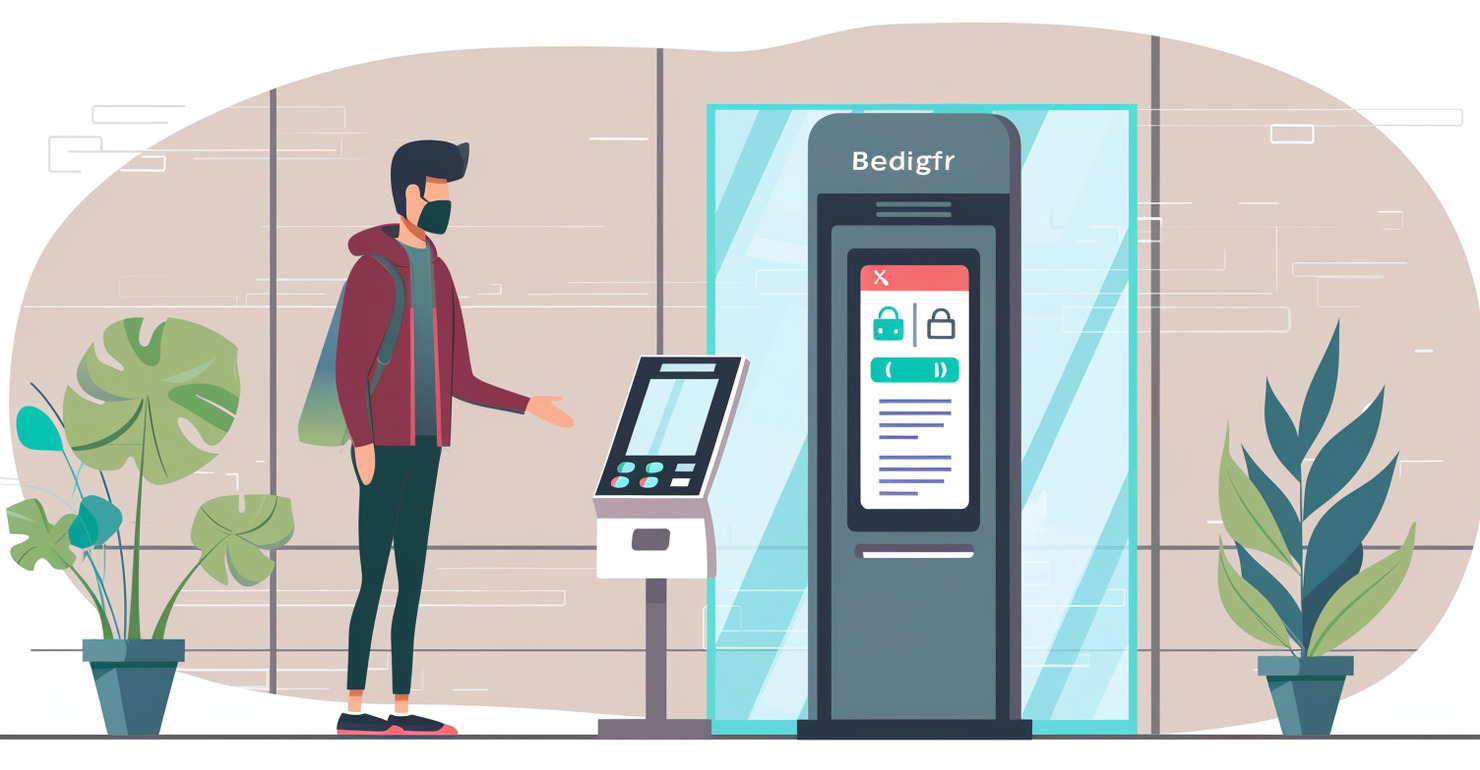
Biometric Screening: The Future of Airport Security
Biometric screening is revolutionizing airport security, offering a secure and efficient way to verify passengers’ identities. By using unique biological characteristics, such as fingerprints, facial recognition, or iris scans, airports can enhance security measures while providing a seamless travel experience.
This article explores the current implementation of biometric screening in airports, the TSA’s biometrics roadmap, the advantages it offers, the challenges and concerns it raises, and the future developments in this field.
What is Biometric Screening?
Biometric screening refers to the use of unique biological characteristics, such as fingerprints, facial features, or iris patterns, to verify and authenticate individuals’ identities. In the context of airport security, biometric screening involves capturing and analyzing these biological traits to enhance the accuracy and efficiency of identity verification processes.
Instead of relying solely on traditional identification methods like passports or boarding passes, biometric screening offers a more secure and seamless way to confirm passengers’ identities. By utilizing advanced technologies such as facial recognition or fingerprint scanning, airports can quickly match an individual’s biometric data with their pre-registered information, streamlining the passenger screening process.
Biometric screening has become increasingly prevalent in airports worldwide, with many major airports implementing biometric systems at various checkpoints, including self-service kiosks, check-in counters, security checkpoints, and boarding gates.
This innovative approach to airport security not only enhances protection against potential threats but also improves the overall passenger experience by reducing wait times and offering a more convenient and efficient travel process.
Current Implementation of Biometric Screening in Airports

Biometric screening has gained significant traction in airports around the world, with many major airports implementing biometric systems at various checkpoints. The technology is being used for a range of purposes such as self-service check-in kiosks, bag drop counters, security checkpoints, and boarding gates.
For example, airports have started utilizing advanced facial recognition technology to expedite the check-in process for travelers. Passengers can now check-in at self-service kiosks by simply scanning their faces, eliminating the need for manual ID checks.
In addition, biometric screening has been utilized at security checkpoints to enhance identity verification. By capturing and comparing individuals’ biometric data, such as fingerprints or facial features, with pre-registered information, airports can ensure a higher level of accuracy in identifying potential threats.
Moreover, biometric screening is also being used to facilitate the boarding process. Passengers can now board planes by simply having their faces scanned, eliminating the need for physical boarding passes.
Major airports in the United States, such as Orlando International Airport and Los Angeles International Airport, have already implemented biometric screening programs, showcasing the increasing adoption of this technology in enhancing airport security.
By incorporating biometric screening, airports aim to not only improve security but also enhance operational efficiency and provide a smoother travel experience for passengers.
TSA Biometrics Roadmap
The TSA (Transportation Security Administration) has developed a comprehensive Biometrics Roadmap to leverage biometric technologies and enhance airport security, operational efficiency, and traveler experience. The roadmap outlines four main goals:
- Partnering with industry and government: The TSA aims to collaborate with industry partners and government agencies to ensure the successful integration of biometric technology in airport security processes.
- Using biometrics for identity verification: The TSA plans to utilize biometric data, such as fingerprints or facial recognition, to verify passengers’ identities accurately and efficiently at various checkpoints.
- Expanding biometric enrollment and vetting: The TSA aims to expand the enrollment of biometric information from passengers, allowing for more streamlined and secure identity verification processes.
- Developing standards and best practices: The TSA is committed to developing industry standards and best practices for the implementation of biometric screening, ensuring consistency and effectiveness across airports.
With this roadmap, the TSA intends to enhance security measures while improving the overall travel experience for passengers. By leveraging biometrics, they aim to create a seamless and secure process for identity verification throughout all stages of air travel.
Advantages of Biometric Screening
Biometric screening offers several advantages that make it a promising solution for enhancing airport security:
- Enhanced Security: Biometric screening provides a higher level of accuracy in identifying individuals compared to traditional identification methods like passports or boarding passes. By relying on unique biological characteristics, such as fingerprints or facial features, the chances of identity fraud or impersonation are significantly reduced.
- Efficiency and Speed: Biometric screening technologies, such as facial recognition or fingerprint scanning, enable faster and more streamlined identity verification processes. Passengers can quickly authenticate their identities without the need for manual ID checks or physical documents, reducing wait times and improving operational efficiency at checkpoints.
- Improved Passenger Experience: Biometric screening enhances the passenger experience by eliminating the need for multiple identity checks or presenting physical documents repeatedly. It simplifies processes such as check-in, bag drop, security checks, and boarding, allowing passengers to have a smoother and more convenient travel experience.
- Seamless Integration: Biometric screening systems can be integrated into existing airport infrastructure without requiring extensive modifications. They can be seamlessly incorporated into self-service kiosks, check-in counters, security checkpoints, and boarding gates, offering a non-intrusive and user-friendly experience.
- Reduced Human Errors: By automating the identity verification process, biometric screening reduces the potential for human errors and inconsistencies. The technology provides accurate and consistent results, minimizing the risk of false identifications or mismatches.
- Multiple Applications: Biometric screening can be utilized beyond airport security, offering potential benefits in areas such as immigration, law enforcement, and access control. Its versatility makes it a valuable tool for ensuring secure and efficient processes across various sectors.
Overall, biometric screening holds great potential in enhancing airport security while improving efficiency and passenger satisfaction. Its ability to provide accurate identification, streamline processes, and offer a seamless travel experience makes it a key component in the future of airport security.
Challenges and Concerns

While biometric screening offers numerous advantages, it also presents challenges and concerns that need to be addressed:
- Privacy Concerns: The collection and storage of sensitive biometric data raise privacy concerns among passengers. It is crucial to establish robust data protection measures and ensure transparency in how the data is handled and stored.
- Accuracy and False Positives/Negatives: Biometric screening systems may occasionally encounter accuracy issues, leading to false positives (incorrectly identifying a person) or false negatives (failing to identify a person). Ongoing research and development are necessary to improve the accuracy and reliability of these systems.
- Technical Challenges: Implementing biometric screening on a large scale requires significant investment in infrastructure, hardware, and software. Ensuring seamless integration with existing airport systems can pose technical challenges that need to be overcome.
- Ethical Considerations: The use of biometric data raises ethical considerations regarding consent, fairness, and potential bias. It is essential to address these concerns and ensure that biometric screening is implemented in a fair and unbiased manner.
- Interoperability and Standardization: To enable effective biometric screening across different airports and countries, interoperability and standardization of biometric systems and data formats are vital. Collaboration between airports, airlines, and governments is necessary to establish common standards.
- Technological Advancement: As with any technology, biometric screening is subject to rapid advancements and innovations. Keeping up with the latest developments and ensuring the scalability and compatibility of biometric systems can be a challenge.
- Public Acceptance: Introducing biometric screening to airports requires public acceptance and trust. It is important to educate the public about the benefits and safeguards in place to address concerns, fostering a positive perception of biometric technology.
Addressing these challenges and concerns through continuous research, collaboration, regulation, and transparency will be crucial in realizing the full potential of biometric screening and ensuring its effective and responsible implementation in airport security.
Future Developments
The future of biometric screening in airports holds exciting possibilities for further enhancing security and the overall travel experience:
- Expanded Adoption: Biometric screening is anticipated to become more widespread among airports globally as the technology continues to mature and gain public acceptance. This means more passengers will benefit from the efficiency and convenience of biometric identification.
- Multi-Modal Biometrics: The integration of multiple biometric modalities, such as combining facial recognition with fingerprint or iris scanning, can further enhance security and accuracy by utilizing multiple layers of identification.
- Continuous Authentication: Continuous biometric authentication throughout the passenger journey, from check-in to boarding, can provide a seamless and secure experience. This may involve using biometrics to verify identity at various touchpoints without the need for additional checks or documents.
- Improvements in Accuracy and Performance: Ongoing research and development efforts are focused on improving the accuracy, speed, and reliability of biometric screening systems. Advancements in artificial intelligence, machine learning, and image recognition technologies will contribute to enhanced performance.
- Interoperability and Global Standards: Efforts are underway to establish interoperability and global standards for biometric screening systems, allowing for seamless integration and information sharing between different airports and countries. This will facilitate smoother travel experiences for passengers across various locations.
- Mobile Integration: The use of mobile devices for biometric identification is expected to increase, enabling passengers to use their smartphones or other mobile devices for seamless identity verification at different stages of their journey.
- Enhanced Data Privacy and Security: As biometric data becomes more prevalent, there will be a greater focus on ensuring robust data privacy and security measures. Stricter regulations and technologies such as decentralized storage and encryption will help protect personal information.
- Integration with Advanced Technologies: Biometric screening may be integrated with other advanced technologies such as artificial intelligence, machine learning, and Internet of Things (IoT) devices to further enhance security and operational efficiency.
With ongoing advancements and continued collaboration between airports, government agencies, and technology providers, the future of biometric screening in airports holds great promise for enhancing security, improving efficiency, and providing a seamless travel experience for passengers.
Conclusion
Biometric screening is playing a significant role in shaping the future of airport security. The implementation of advanced technologies, such as facial recognition and fingerprint scanning, offers a more secure, efficient, and seamless way to verify passengers’ identities at various checkpoints in airports.
With biometric screening, passengers can experience enhanced security measures, reduced wait times, and improved overall travel experiences. By leveraging unique biological traits, airports can ensure accurate identification while streamlining processes like check-in, security checks, and boarding.
While biometric screening presents advantages in terms of security and efficiency, it also comes with challenges and concerns. Privacy considerations, accuracy issues, technical challenges, and ethical considerations need to be addressed to ensure responsible and effective implementation.
Looking forward, the future developments of biometric screening in airports hold great promise. Expanded adoption, multi-modal biometrics, continuous authentication, improved accuracy, and interoperability are among the advancements expected. Integration with advanced technologies and emphasis on data privacy and security will further shape the future of biometric screening in the aviation industry.
Overall, biometric screening offers the potential to transform airport security by providing a secure, efficient, and seamless travel experience for passengers. As technology continues to advance and regulations evolve, biometric screening is set to become an integral part of the airport security infrastructure, ensuring safer and more convenient journeys for travelers worldwide.
P.S.: more information: https://eu.usatoday.com/story/travel/airline-news/2019/08/16/biometric-airport-screening-facial-recognition-everything-you-need-know/1998749001/



